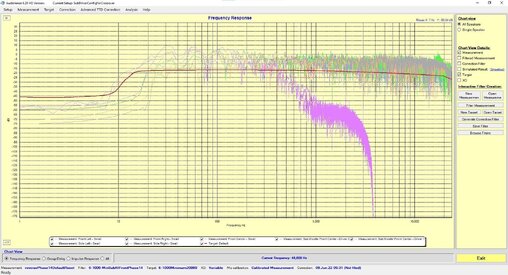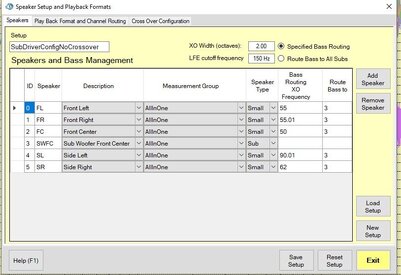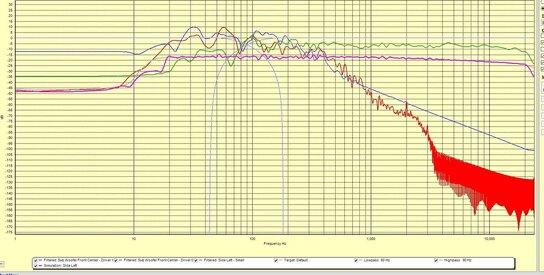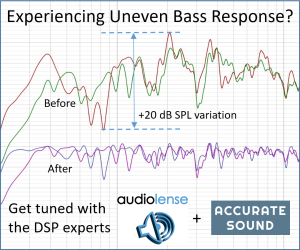whoareyou
Member
Thread Starter
- Joined
- Dec 23, 2021
- Posts
- 235
More
- Main Amp
- Benchmark AHB2
- Additional Amp
- ATI AT525NC
- DAC
- Exasound E38
- Computer Audio
- JRiver
- Front Speakers
- Psb synchrony one
- Center Channel Speaker
- PSB synchrony one C
- Surround Speakers
- Revel m105
I've been experimenting with two subs in parallel, and like the overall results and I believe system sounds best with this technique. For me much better results than using AL two sub solution with each sub separate.
But I have question (as usual ), this time regarding simulation of the parallel configuration.
), this time regarding simulation of the parallel configuration.
At 40hz area simulation shows huge dip, which to me doesn't make sense based on the measurements shown in frequency response. Why this dip when other areas with dips show much better results in simulation?
Of course, verification would be to measure actual results, but I have yet to figure out a way to measure actuals via my setup (Jriver / ASIO dac / USB Mic).
Absent ability to measure actual results, does anyone have a suggestion as to why I see these results in the simulation (attached smoothed and actual measurement)?
Also, anyone have success with measuring a multichannel setup via JRiver / REW /USB DAC / USB mik (umik-1)? .


But I have question (as usual
At 40hz area simulation shows huge dip, which to me doesn't make sense based on the measurements shown in frequency response. Why this dip when other areas with dips show much better results in simulation?
Of course, verification would be to measure actual results, but I have yet to figure out a way to measure actuals via my setup (Jriver / ASIO dac / USB Mic).
Absent ability to measure actual results, does anyone have a suggestion as to why I see these results in the simulation (attached smoothed and actual measurement)?
Also, anyone have success with measuring a multichannel setup via JRiver / REW /USB DAC / USB mik (umik-1)? .


















